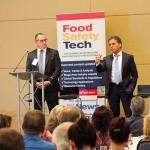Like most people, I enjoy a good steak.
I have also found that, in recent years, my options for good, quality steaks have increased significantly, as food processors and restaurant chains look for ways to distinguish themselves and their products. Industry has moved toward more value-added products, such as mechanically tenderized steaks, using needles to soften the meat and even to inject marinade. Indeed, I think it would be safe to say that the vast majority of steaks now consumed in restaurants are mechanically tenderized.
The use of such technologies, however, creates additional food safety challenges not present in non-tenderized products. This is because, to the extent there is any possible pathogenic contamination present on the exterior of a steak, the process of mechanical tenderization can push that contamination deep into the product, where it becomes more difficult to destroy through cooking.
With that backdrop, the U.S. Department of Agriculture is now becoming more involved in helping educate end-users on the risks associated with mechanically tenderized products. In particular, USDA has published new proposed rules requiring meat processors to properly label any mechanically tenderized meat products they sell. These new rules will likely have two effects: (1) they may make mechanically-tenderized rare or medium rare steaks nearly impossible to sell; and (2) they may drive the vast majority of these products out of the food service market.
Here’s why. In addition to requiring processors to label these products as “mechanically tenderized,” USDA will also require processors to include validated cooking instructions which, if followed, will ensure that any harmful pathogens in these products are destroyed. The question, then, for industry will be whether cooking mechanically tenderized steaks to the higher temperatures needed to kill foodborne pathogens will prevent them in most cases from being served “rare” or even “medium rare.”
To justify its new rules, USDA has cited a number of recent outbreaks caused by mechanically tenderized steaks. According to USDA, since the year 2000, there have been a total of six E. coli O157:H7 foodborne illness outbreaks attributable to mechanically tenderized steaks served in restaurants and consumer homes. These six outbreaks, spanning 13 years, have included a total of 176 confirmed E. coli O157:H7 cases that resulted in 32 hospitalizations and 4 cases of HUS (acute renal failure).
While you can decide for yourself whether such a substantial change in the labeling of steak products is warranted by the fewer than 15 cases reported annually since 2000, what we do know is that the labeling rules are changing fast, and serving mechanically-tenderized medium rare steaks in restaurants may no longer be a legal option. Time (and temperature), of course, will tell. Ultimately, this is because whether the term “medium rare” survives will depend upon the validation studies governing any new labeling. USDA’s rules will require validated instructions to include, at a minimum: (1) the method of cooking; (2) a minimum internal temperature validated to ensure that potential pathogens are destroyed throughout the product; (3) whether the product needs to be held for a specified time at that temperature before consumption; and (4) an instruction that the internal temperature should be measured by the use of a thermometer.
In turn, processors will need to demonstrate to USDA that the instructions are also “scientifically supported,” meaning they must demonstrate that: (a) the cooking instructions can repeatedly achieve the desired minimum internal temperature and, if applicable, rest time; and (b) the minimum internal time and, if applicable, rest time achieved by the instructions will ensure that the product is fully cooked to a level designed to destroy any potential pathogens throughout the product. On the other side of the coin, even if processors could properly validate their cooking instructions, it may be that we see some major restaurant chains shift away from using these products altogether.
Indeed, once the new labeling requirements go into effect, then restaurants will have a difficult decision to make: comply with the labeling instructions, or ignore them?Responsible restaurant chains will, of course, determine that they need to comply with the instructional labels. This is because the instructions, themselves, anticipate (or, at least warn) that the product at issue could possibly contain pathogens and thus must be cooked to a predetermined temperature in order to render that product safe for consumption. If those instructions are ignored, however, and a customer becomes sick (or, even dies, as a result), that company could be exposed to significant punitive damages for disregarding a known risk. Thus, the only responsible course will be to either: (1) refine internal policy to ensure that all such products are cooked to the recommended temperatures; or (2) to purchase steaks that are not mechanically or needle tenderized. There really will be no other options.
So, the most likely longer term result, in my opinion, may be that the restaurant industry will begin to move away from needle or mechanically-tenderized products, unless and until those products can be subjected to processing interventions (like irradiation) that will allow the end users to prepare and then serve them somewhere south of well-done.
So, if you like selling or serving (or, I suppose, eating) steaks that can be cooked medium rare, you may want to watch these new rules closely. In in the end, “medium rare” may become much more rare you think.








